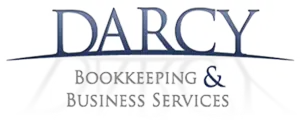


The small business income tax offset is a valuable tax relief measure designed to reduce the tax burden for small business owners like you in Australia. By taking advantage of this offset, you could lower your tax liability and potentially pay less tax overall. In this post, we’ll walk you through what the offset is, who’s eligible to claim it, and how you can calculate it to estimate how much you could save.
The small business tax offset, sometimes called a tax credit or rebate, reduces the amount of income tax you need to pay, based on the profits your business generates.
The small business income tax offset continues to provide relief for eligible small businesses. If your business qualifies, you can receive an offset of up to 16% of your income tax, with a maximum benefit of $1,000 per year.
Small business owners should make the effort to stay up to date with any changes to the offset and tax laws, as the rules and eligibility criteria can evolve over time. While the offset itself has been capped at $1,000 since 2015, it's important to regularly check the Australian Taxation Office (ATO) website for any updates or potential adjustments to the scheme.
Let’s say your business has a taxable income of $50,000, and you owe $5,000 in income tax. If you qualify for the offset, the 16% rebate would reduce your tax liability by $800, bringing your total owed tax to $4,200.
Taxable Income: $50,000
Tax Payable: $5,000
Offset (16% of $5,000): $800
New Tax Liability: $4,200 (after applying the offset)
To qualify for the small business tax offset, you must satisfy all of the following criteria:
To further reduce your tax liability and maximise your savings, it's essential to file your tax return accurately and on time - a proper tax plan helps to get this in on time. Ensuring that all deductions and expenses are correctly accounted for can make a significant difference in the amount of income tax your business owes.

Tax laws are complex and ever-changing. If you need specific advice on your own situation, it’s always best to speak to a tax professional or accountant. Get in touch at 1300 728 875 or fill out a contact form to get started.


In addition to income tax, small business owners may need to consider other taxes depending on their business structure and activities. These could include:
Staying compliant with all tax obligations and understanding which taxes apply to your business structure can help you avoid penalties and reduce your overall tax liability.
Businesses structured as companies are not eligible for the small business income tax offset. Instead, they are subject to company tax rates, which are applied to their profits. However, companies may still be eligible for other tax offsets or rebates that can help reduce their tax burden.
For small businesses that qualify as base rate entities (those with an aggregated turnover of less than $50 million), the company tax rate is set at 25% as of the 2024-25 financial year. This rate is lower than the standard corporate tax rate of 30% for larger businesses.
In Australia, entrepreneurs are typically subject to income tax on the profits generated by their business (or businesses), and they may also be eligible for various tax offsets, rebates, and credits that can reduce their tax liability.
For entrepreneurs operating as sole traders, partnerships, or trusts, the ability to claim these tax-saving opportunities can free up more capital to reinvest into the business and fuel growth.
To keep your small business compliant with ATO rules and regulations, it’s important to understand your eligibility for the various credits, rebates, and tax offsets available, including the small business income tax offset. By accurately calculating revenue, expenses, and taxable income, and ensuring that all eligible deductions are claimed, you can significantly reduce your overall tax liability.
The small business income tax offset is a valuable tool that can reduce your tax liability and provide significant savings.
As a small business owner, partnering with a small business tax accountant can make a significant difference in how you manage your taxes. Tax laws can be complex, and an experienced accountant will help ensure you're applying all eligible deductions for your business expenses, staying compliant with ATO regulations, and maximising tax savings.
By letting professionals handle the complicated details of tax management, you can concentrate on keeping your small business running. If you need guidance on tax obligations, rebates, or deductions, don’t hesitate to reach out to our team at Darcy Bookkeeping or give us a call on 1300 728 875.
